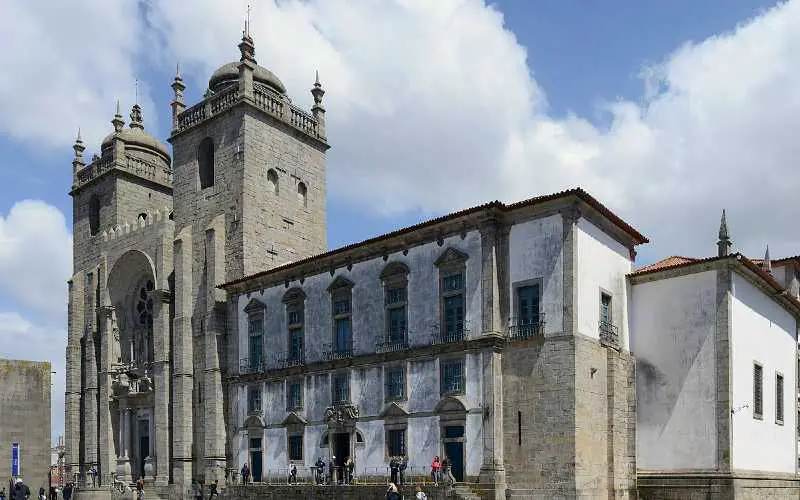Porto Cathedral is a church in Porto, Portugal. It was built between the 12th and 18th centuries and is the country’s last example of an architectural style that mixes Romanesque and Gothic styles.
Built over many centuries atop the ruins of a 10th century Moorish mosque, this cathedral has managed to maintain an atmosphere of solemnity, despite being surprisingly light-filled given its age. The façades were decorated with white limestone ashlar masonry, with some granite details. The roof is graced by twin towers which appear to emerge from the façade, and on which construction began at the end of the 16th century and was never completed (perhaps because of a lack of funds). The interior consists of a Gothic nave, divided into three portions by wide, barrel-vaulted arches. The nave ends in a dais under three large stained glass windows.
This dense cluster of chapels in the centre includes the Chapel of St. John the Baptist, the Chapel of St. John the Evangelist and the Chapel of Our Lady of Lourdes.
The Cathedral contains one of the most important products of Portuguese goldsmith work: a golden monstrance from 1571 (the only one in Portugal).
The main portal is notable for its 16th-century Flemish-style statues depicting Male and Female Saints. Overhead, a niche contains a statue of Saint Vincent, patron of Porto.
Porto Cathedral is the oldest church in Porto and marks some of the most important moments in Portuguese History. King Sancho I built the Cathedral around 1170. It was constructed on top of a mosque, as the Christians had conquered Porto and Portugal in the 12th century.
A visit to Porto cathedral is free for visitors. You can visit the additional cloisters and treasures but for a fee. A combination ticket for the Sé, the Episcopal Palace and Clerigos Tower costs 11 euros, so this might be the best value option.
If you enjoyed this article you might also like to read about Churches of Portugal



1 thought on “Porto Cathedral”